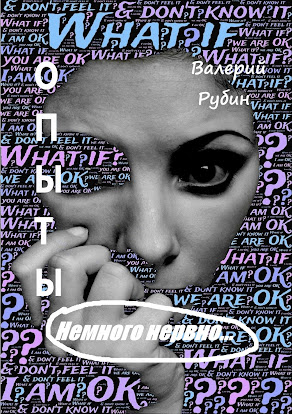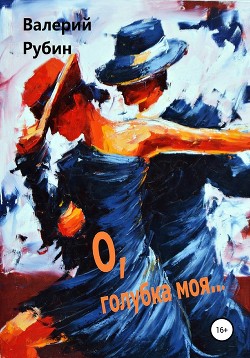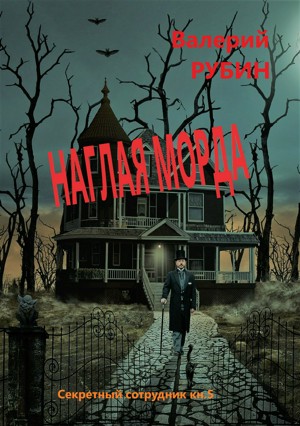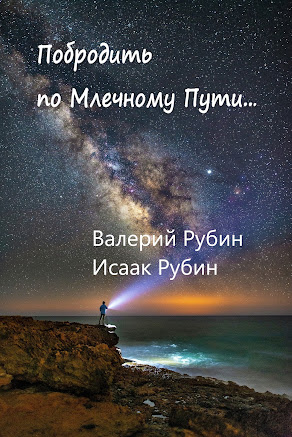Christmas is an annual festival commemorating the birth of Jesus Christ, observed primarily on December 25[a] as a religious and cultural celebration among billions of people around the world.
A feast central to the Christian liturgical year, it is preceded by the season of Advent or the Nativity Fast and initiates the season of Christmastide, which historically in the West lasts twelve days and culminates on Twelfth Night; in some traditions, Christmastide includes an octave. Christmas Day is a public holiday in many of the world's nations, is celebrated religiously by a majority of Christians, as well as culturally by many non-Christians, and forms an integral part of the holiday season centered around it.
The traditional Christmas narrative, the Nativity of Jesus, delineated in the New Testament says that Jesus was born in Bethlehem, in accordance with messianic prophecies. When Joseph and Mary arrived in the city, the inn had no room and so they were offered a stable where the Christ Child was soon born, with angels proclaiming this news to shepherds who then further disseminated the information.
Although the month and date of Jesus' birth are unknown, the church in the early fourth century fixed the date as December 25. This corresponds to the date of the winter solstice on the Roman calendar. Most Christians celebrate on December 25 in the Gregorian calendar, which has been adopted almost universally in the civil calendars used in countries throughout the world. However, some Eastern Christian Churches celebrate Christmas on December 25 of the older Julian calendar, which currently corresponds to a January date in the Gregorian calendar. For Christians, believing that God came into the world in the form of man to atone for the sins of humanity, rather than knowing Jesus' exact birth date, is considered to be the primary purpose in celebrating Christmas.
The celebratory customs associated in various countries with Christmas have a mix of pre-Christian, Christian, and secular themes and origins. Popular modern customs of the holiday include gift giving; completing an Advent calendar or Advent wreath; Christmas music and caroling; viewing a Nativity play; an exchange of Christmas cards; church services; a special meal; and the display of various Christmas decorations, including Christmas trees, Christmas lights, nativity scenes, garlands, wreaths, mistletoe, and holly. In addition, several closely related and often interchangeable figures, known as Santa Claus, Father Christmas, Saint Nicholas, and Christkind, are associated with bringing gifts to children during the Christmas season and have their own body of traditions and lore.[30] Because gift-giving and many other aspects of the Christmas festival involve heightened economic activity, the holiday has become a significant event and a key sales period for retailers and businesses. The economic impact of Christmas has grown steadily over the past few centuries in many regions of the world.

Etymology
"Christmas" is a shortened form of "Christ's mass". The word is recorded as Crīstesmæsse in 1038 and Cristes-messe in 1131. Crīst (genitive Crīstes) is from Greek Khrīstos (Χριστός), a translation of Hebrew Māšîaḥ (מָשִׁיחַ), "Messiah", meaning "anointed"; and mæsse is from Latin missa, the celebration of the Eucharist.
The form Christenmas was also historically used, but is now considered archaic and dialectal. The term derives from Middle English Cristenmasse, meaning "Christian mass". Xmas is an abbreviation of Christmas found particularly in print, based on the initial letter chi (Χ) in Greek Khrīstos (Χριστός), "Christ", though numerous style guides discourage its use. This abbreviation has precedent in Middle English Χρ̄es masse (where "Χρ̄" is an abbreviation for Χριστός).
Other names
In addition to "Christmas", the holiday has been known by various other names throughout its history. The Anglo-Saxons referred to the feast as "midwinter", or, more rarely, as Nātiuiteð (from Latin nātīvitās below). "Nativity", meaning "birth", is from Latin nātīvitās. In Old English, Gēola (Yule) referred to the period corresponding to December and January, which was eventually equated with Christian Christmas. "Noel" (or "Nowel") entered English in the late 14th century and is from the Old French noël or naël, itself ultimately from the Latin nātālis (diēs) meaning "birth (day)".
Nativity
The gospels of Luke and Matthew describe Jesus as being born in Bethlehem to the Virgin Mary. In Luke, Joseph and Mary travel from Nazareth to Bethlehem for the census, and Jesus is born there and laid in a manger. Angels proclaimed him a savior for all people, and shepherds came to adore him.
Matthew adds that the magi follow a star to Bethlehem to bring gifts to Jesus, born the king of the Jews. King Herod orders the massacre of all the boys less than two years old in Bethlehem, but the family flees to Egypt and later returns to Nazareth.
History
The nativity sequences included in the Gospels of Matthew and Luke prompted early Christian writers to suggest various dates for the anniversary. Although no date is indicated in the gospels, early Christians connected Jesus to the Sun through the use of such phrases as "Sun of righteousness." The Romans marked the winter solstice on December 25. The first recorded Christmas celebration was in Rome on 25 December 336. In the 3rd century, the date of the nativity was the subject of great interest. Around AD 200, Clement of Alexandria wrote:
There are those who have determined not only the year of our Lord's birth, but also the day; and they say that it took place in the 28th year of Augustus, and in the 25th day of [the Egyptian month] Pachon [May 20] ... Further, others say that He was born on the 24th or 25th of Pharmuthi [April 20 or 21].
Various factors contributed to the selection of December 25 as a date of celebration: it was the date of the winter solstice on the Roman calendar and it was about nine months after March 25, the date of the vernal equinox and a date linked to the conception of Jesus (now Annunciation).
Christmas played a role in the Arian controversy of the fourth century. After this controversy ran its course, the prominence of the holiday declined for a few centuries. The feast regained prominence after 800 when Charlemagne was crowned emperor on Christmas Day. Later during the Protestant Reformation, the Puritans banned Christmas in England, associating it with drunkenness and other misbehavior. It was restored as a legal holiday in England in 1660, but remained disreputable in the minds of many people. In the early 19th century, Christmas was reconceived by Washington Irving, Charles Dickens, and other authors as a holiday emphasizing family, children, kind-heartedness, gift-giving, and Santa Claus.
19th century
In the UK, Christmas Day became a bank holiday in 1834. Boxing Day, the day after Christmas, was added in 1871.
In the early-19th century, writers imagined Tudor Christmas as a time of heartfelt celebration. In 1843, Charles Dickens wrote the novel A Christmas Carol that helped revive the "spirit" of Christmas and seasonal merriment. Its instant popularity played a major role in portraying Christmas as a holiday emphasizing family, goodwill, and compassion.
Dickens sought to construct Christmas as a family-centered festival of generosity, linking "worship and feasting, within a context of social reconciliation." Superimposing his humanitarian vision of the holiday, in what has been termed "Carol Philosophy", Dickens influenced many aspects of Christmas that are celebrated today in Western culture, such as family gatherings, seasonal food and drink, dancing, games, and a festive generosity of spirit. A prominent phrase from the tale, "Merry Christmas", was popularized following the appearance of the story. This coincided with the appearance of the Oxford Movement and the growth of Anglo-Catholicism, which led a revival in traditional rituals and religious observances.
The term Scrooge became a synonym for miser, with "Bah! Humbug!" dismissive of the festive spirit. In 1843, the first commercial Christmas card was produced by Sir Henry Cole. The revival of the Christmas Carol began with William Sandys's "Christmas Carols Ancient and Modern" (1833), with the first appearance in print of "The First Noel", "I Saw Three Ships", "Hark the Herald Angels Sing" and "God Rest Ye Merry, Gentlemen", popularized in Dickens' A Christmas Carol.
In Britain, the Christmas tree was introduced in the early 19th century following the personal union with the Kingdom of Hanover by Charlotte of Mecklenburg-Strelitz, wife of King George III. In 1832, the future Queen Victoria wrote about her delight at having a Christmas tree, hung with lights, ornaments, and presents placed round it. After her marriage to her German cousin Prince Albert, by 1841 the custom became more widespread throughout Britain.
An image of the British royal family with their Christmas tree at Windsor Castle created a sensation when it was published in the Illustrated London News in 1848. A modified version of this image was published in the United States in 1850. By the 1870s, putting up a Christmas tree had become common in America.
In America, interest in Christmas had been revived in the 1820s by several short stories by Washington Irving which appear in his The Sketch Book of Geoffrey Crayon, Gent. and "Old Christmas". Irving's stories depicted harmonious warm-hearted English Christmas festivities he experienced while staying in Aston Hall, Birmingham, England, that had largely been abandoned, and he used the tract Vindication of Christmas (1652) of Old English Christmas traditions, that he had transcribed into his journal as a format for his stories.
In 1822, Clement Clarke Moore wrote the poem A Visit From St. Nicholas (popularly known by its first line: Twas the Night Before Christmas). The poem helped popularize the tradition of exchanging gifts, and seasonal Christmas shopping began to assume economic importance. This also started the cultural conflict between the holiday's spiritual significance and its associated commercialism that some see as corrupting the holiday. In her 1850 book The First Christmas in New England, Harriet Beecher Stowe includes a character who complains that the true meaning of Christmas was lost in a shopping spree.
While the celebration of Christmas was not yet customary in some regions in the U.S., Henry Wadsworth Longfellow detected "a transition state about Christmas here in New England" in 1856. "The old puritan feeling prevents it from being a cheerful, hearty holiday; though every year makes it more so." In Reading, Pennsylvania, a newspaper remarked in 1861, "Even our presbyterian friends who have hitherto steadfastly ignored Christmas—threw open their church doors and assembled in force to celebrate the anniversary of the Savior's birth."
The First Congregational Church of Rockford, Illinois, "although of genuine Puritan stock", was 'preparing for a grand Christmas jubilee', a news correspondent reported in 1864. By 1860, fourteen states including several from New England had adopted Christmas as a legal holiday. In 1875, Louis Prang introduced the Christmas card to Americans. He has been called the "father of the American Christmas card". On June 28, 1870, Christmas was formally declared a United States federal holiday.
20th century
Up to the 1950s in the UK, many Christmas customs were restricted to the upper classes and better-off families. The mass of the population had not adopted many of the Christmas rituals that later became general. The Christmas tree was rare. Christmas dinner might be beef or goose — certainly not turkey. In their stockings children might get an apple, orange, and sweets. Full celebration of a family Christmas with all the trimmings only became widespread with increased prosperity from the 1950s. National papers were published on Christmas Day until 1912. Post was still delivered on Christmas Day until 1961. League football matches continued in Scotland until the 1970s while in England they ceased at the end of the 1950s.
Under the state atheism of the Soviet Union, after its foundation in 1917, Christmas celebrations—along with other Christian holidays—were prohibited in public. During the 1920s, '30s, and '40s, the League of Militant Atheists encouraged school pupils to campaign against Christmas traditions, such as the Christmas tree, as well as other Christian holidays, including Easter; the League established an antireligious holiday to be the 31st of each month as a replacement. At the height of this persecution, in 1929, on Christmas Day, children in Moscow were encouraged to spit on crucifixes as a protest against the holiday. It was not until the dissolution of the Soviet Union in 1991 that the persecution ended and Orthodox Christmas became a state holiday again for the first time in Russia after seven decades.
European History Professor Joseph Perry wrote that likewise, in Nazi Germany, "because Nazi ideologues saw organized religion as an enemy of the totalitarian state, propagandists sought to deemphasize—or eliminate altogether—the Christian aspects of the holiday" and that "Propagandists tirelessly promoted numerous Nazified Christmas songs, which replaced Christian themes with the regime's racial ideologies."
As Christmas celebrations began to be held around the world even outside traditional Christian cultures in the 20th century, some Muslim-majority countries subsequently banned the practice of Christmas, claiming it undermines Islam.
Observance and traditions
Christmas Day is celebrated as a major festival and public holiday in countries around the world, including many whose populations are mostly non-Christian. In some non-Christian areas, periods of former colonial rule introduced the celebration (e.g. Hong Kong); in others, Christian minorities or foreign cultural influences have led populations to observe the holiday. Countries such as Japan, where Christmas is popular despite there being only a small number of Christians, have adopted many of the secular aspects of Christmas, such as gift-giving, decorations, and Christmas trees.
Among countries with a strong Christian tradition, a variety of Christmas celebrations have developed that incorporate regional and local cultures.
Wikipedia
Posted by "Канадская служба новостей" CNS Non-Profit site. Некоммерческое сообщество журналистов
A feast central to the Christian liturgical year, it is preceded by the season of Advent or the Nativity Fast and initiates the season of Christmastide, which historically in the West lasts twelve days and culminates on Twelfth Night; in some traditions, Christmastide includes an octave. Christmas Day is a public holiday in many of the world's nations, is celebrated religiously by a majority of Christians, as well as culturally by many non-Christians, and forms an integral part of the holiday season centered around it.
The traditional Christmas narrative, the Nativity of Jesus, delineated in the New Testament says that Jesus was born in Bethlehem, in accordance with messianic prophecies. When Joseph and Mary arrived in the city, the inn had no room and so they were offered a stable where the Christ Child was soon born, with angels proclaiming this news to shepherds who then further disseminated the information.
Although the month and date of Jesus' birth are unknown, the church in the early fourth century fixed the date as December 25. This corresponds to the date of the winter solstice on the Roman calendar. Most Christians celebrate on December 25 in the Gregorian calendar, which has been adopted almost universally in the civil calendars used in countries throughout the world. However, some Eastern Christian Churches celebrate Christmas on December 25 of the older Julian calendar, which currently corresponds to a January date in the Gregorian calendar. For Christians, believing that God came into the world in the form of man to atone for the sins of humanity, rather than knowing Jesus' exact birth date, is considered to be the primary purpose in celebrating Christmas.
The celebratory customs associated in various countries with Christmas have a mix of pre-Christian, Christian, and secular themes and origins. Popular modern customs of the holiday include gift giving; completing an Advent calendar or Advent wreath; Christmas music and caroling; viewing a Nativity play; an exchange of Christmas cards; church services; a special meal; and the display of various Christmas decorations, including Christmas trees, Christmas lights, nativity scenes, garlands, wreaths, mistletoe, and holly. In addition, several closely related and often interchangeable figures, known as Santa Claus, Father Christmas, Saint Nicholas, and Christkind, are associated with bringing gifts to children during the Christmas season and have their own body of traditions and lore.[30] Because gift-giving and many other aspects of the Christmas festival involve heightened economic activity, the holiday has become a significant event and a key sales period for retailers and businesses. The economic impact of Christmas has grown steadily over the past few centuries in many regions of the world.

Etymology
"Christmas" is a shortened form of "Christ's mass". The word is recorded as Crīstesmæsse in 1038 and Cristes-messe in 1131. Crīst (genitive Crīstes) is from Greek Khrīstos (Χριστός), a translation of Hebrew Māšîaḥ (מָשִׁיחַ), "Messiah", meaning "anointed"; and mæsse is from Latin missa, the celebration of the Eucharist.
The form Christenmas was also historically used, but is now considered archaic and dialectal. The term derives from Middle English Cristenmasse, meaning "Christian mass". Xmas is an abbreviation of Christmas found particularly in print, based on the initial letter chi (Χ) in Greek Khrīstos (Χριστός), "Christ", though numerous style guides discourage its use. This abbreviation has precedent in Middle English Χρ̄es masse (where "Χρ̄" is an abbreviation for Χριστός).
Other names
In addition to "Christmas", the holiday has been known by various other names throughout its history. The Anglo-Saxons referred to the feast as "midwinter", or, more rarely, as Nātiuiteð (from Latin nātīvitās below). "Nativity", meaning "birth", is from Latin nātīvitās. In Old English, Gēola (Yule) referred to the period corresponding to December and January, which was eventually equated with Christian Christmas. "Noel" (or "Nowel") entered English in the late 14th century and is from the Old French noël or naël, itself ultimately from the Latin nātālis (diēs) meaning "birth (day)".
Nativity
The gospels of Luke and Matthew describe Jesus as being born in Bethlehem to the Virgin Mary. In Luke, Joseph and Mary travel from Nazareth to Bethlehem for the census, and Jesus is born there and laid in a manger. Angels proclaimed him a savior for all people, and shepherds came to adore him.
Matthew adds that the magi follow a star to Bethlehem to bring gifts to Jesus, born the king of the Jews. King Herod orders the massacre of all the boys less than two years old in Bethlehem, but the family flees to Egypt and later returns to Nazareth.
History
The nativity sequences included in the Gospels of Matthew and Luke prompted early Christian writers to suggest various dates for the anniversary. Although no date is indicated in the gospels, early Christians connected Jesus to the Sun through the use of such phrases as "Sun of righteousness." The Romans marked the winter solstice on December 25. The first recorded Christmas celebration was in Rome on 25 December 336. In the 3rd century, the date of the nativity was the subject of great interest. Around AD 200, Clement of Alexandria wrote:
There are those who have determined not only the year of our Lord's birth, but also the day; and they say that it took place in the 28th year of Augustus, and in the 25th day of [the Egyptian month] Pachon [May 20] ... Further, others say that He was born on the 24th or 25th of Pharmuthi [April 20 or 21].
Various factors contributed to the selection of December 25 as a date of celebration: it was the date of the winter solstice on the Roman calendar and it was about nine months after March 25, the date of the vernal equinox and a date linked to the conception of Jesus (now Annunciation).
Christmas played a role in the Arian controversy of the fourth century. After this controversy ran its course, the prominence of the holiday declined for a few centuries. The feast regained prominence after 800 when Charlemagne was crowned emperor on Christmas Day. Later during the Protestant Reformation, the Puritans banned Christmas in England, associating it with drunkenness and other misbehavior. It was restored as a legal holiday in England in 1660, but remained disreputable in the minds of many people. In the early 19th century, Christmas was reconceived by Washington Irving, Charles Dickens, and other authors as a holiday emphasizing family, children, kind-heartedness, gift-giving, and Santa Claus.
19th century
In the UK, Christmas Day became a bank holiday in 1834. Boxing Day, the day after Christmas, was added in 1871.
In the early-19th century, writers imagined Tudor Christmas as a time of heartfelt celebration. In 1843, Charles Dickens wrote the novel A Christmas Carol that helped revive the "spirit" of Christmas and seasonal merriment. Its instant popularity played a major role in portraying Christmas as a holiday emphasizing family, goodwill, and compassion.
Dickens sought to construct Christmas as a family-centered festival of generosity, linking "worship and feasting, within a context of social reconciliation." Superimposing his humanitarian vision of the holiday, in what has been termed "Carol Philosophy", Dickens influenced many aspects of Christmas that are celebrated today in Western culture, such as family gatherings, seasonal food and drink, dancing, games, and a festive generosity of spirit. A prominent phrase from the tale, "Merry Christmas", was popularized following the appearance of the story. This coincided with the appearance of the Oxford Movement and the growth of Anglo-Catholicism, which led a revival in traditional rituals and religious observances.
The term Scrooge became a synonym for miser, with "Bah! Humbug!" dismissive of the festive spirit. In 1843, the first commercial Christmas card was produced by Sir Henry Cole. The revival of the Christmas Carol began with William Sandys's "Christmas Carols Ancient and Modern" (1833), with the first appearance in print of "The First Noel", "I Saw Three Ships", "Hark the Herald Angels Sing" and "God Rest Ye Merry, Gentlemen", popularized in Dickens' A Christmas Carol.
In Britain, the Christmas tree was introduced in the early 19th century following the personal union with the Kingdom of Hanover by Charlotte of Mecklenburg-Strelitz, wife of King George III. In 1832, the future Queen Victoria wrote about her delight at having a Christmas tree, hung with lights, ornaments, and presents placed round it. After her marriage to her German cousin Prince Albert, by 1841 the custom became more widespread throughout Britain.
An image of the British royal family with their Christmas tree at Windsor Castle created a sensation when it was published in the Illustrated London News in 1848. A modified version of this image was published in the United States in 1850. By the 1870s, putting up a Christmas tree had become common in America.
In America, interest in Christmas had been revived in the 1820s by several short stories by Washington Irving which appear in his The Sketch Book of Geoffrey Crayon, Gent. and "Old Christmas". Irving's stories depicted harmonious warm-hearted English Christmas festivities he experienced while staying in Aston Hall, Birmingham, England, that had largely been abandoned, and he used the tract Vindication of Christmas (1652) of Old English Christmas traditions, that he had transcribed into his journal as a format for his stories.
In 1822, Clement Clarke Moore wrote the poem A Visit From St. Nicholas (popularly known by its first line: Twas the Night Before Christmas). The poem helped popularize the tradition of exchanging gifts, and seasonal Christmas shopping began to assume economic importance. This also started the cultural conflict between the holiday's spiritual significance and its associated commercialism that some see as corrupting the holiday. In her 1850 book The First Christmas in New England, Harriet Beecher Stowe includes a character who complains that the true meaning of Christmas was lost in a shopping spree.
While the celebration of Christmas was not yet customary in some regions in the U.S., Henry Wadsworth Longfellow detected "a transition state about Christmas here in New England" in 1856. "The old puritan feeling prevents it from being a cheerful, hearty holiday; though every year makes it more so." In Reading, Pennsylvania, a newspaper remarked in 1861, "Even our presbyterian friends who have hitherto steadfastly ignored Christmas—threw open their church doors and assembled in force to celebrate the anniversary of the Savior's birth."
The First Congregational Church of Rockford, Illinois, "although of genuine Puritan stock", was 'preparing for a grand Christmas jubilee', a news correspondent reported in 1864. By 1860, fourteen states including several from New England had adopted Christmas as a legal holiday. In 1875, Louis Prang introduced the Christmas card to Americans. He has been called the "father of the American Christmas card". On June 28, 1870, Christmas was formally declared a United States federal holiday.
20th century
Up to the 1950s in the UK, many Christmas customs were restricted to the upper classes and better-off families. The mass of the population had not adopted many of the Christmas rituals that later became general. The Christmas tree was rare. Christmas dinner might be beef or goose — certainly not turkey. In their stockings children might get an apple, orange, and sweets. Full celebration of a family Christmas with all the trimmings only became widespread with increased prosperity from the 1950s. National papers were published on Christmas Day until 1912. Post was still delivered on Christmas Day until 1961. League football matches continued in Scotland until the 1970s while in England they ceased at the end of the 1950s.
Under the state atheism of the Soviet Union, after its foundation in 1917, Christmas celebrations—along with other Christian holidays—were prohibited in public. During the 1920s, '30s, and '40s, the League of Militant Atheists encouraged school pupils to campaign against Christmas traditions, such as the Christmas tree, as well as other Christian holidays, including Easter; the League established an antireligious holiday to be the 31st of each month as a replacement. At the height of this persecution, in 1929, on Christmas Day, children in Moscow were encouraged to spit on crucifixes as a protest against the holiday. It was not until the dissolution of the Soviet Union in 1991 that the persecution ended and Orthodox Christmas became a state holiday again for the first time in Russia after seven decades.
European History Professor Joseph Perry wrote that likewise, in Nazi Germany, "because Nazi ideologues saw organized religion as an enemy of the totalitarian state, propagandists sought to deemphasize—or eliminate altogether—the Christian aspects of the holiday" and that "Propagandists tirelessly promoted numerous Nazified Christmas songs, which replaced Christian themes with the regime's racial ideologies."
As Christmas celebrations began to be held around the world even outside traditional Christian cultures in the 20th century, some Muslim-majority countries subsequently banned the practice of Christmas, claiming it undermines Islam.
Observance and traditions
Christmas Day is celebrated as a major festival and public holiday in countries around the world, including many whose populations are mostly non-Christian. In some non-Christian areas, periods of former colonial rule introduced the celebration (e.g. Hong Kong); in others, Christian minorities or foreign cultural influences have led populations to observe the holiday. Countries such as Japan, where Christmas is popular despite there being only a small number of Christians, have adopted many of the secular aspects of Christmas, such as gift-giving, decorations, and Christmas trees.
Among countries with a strong Christian tradition, a variety of Christmas celebrations have developed that incorporate regional and local cultures.
Wikipedia
Posted by "Канадская служба новостей" CNS Non-Profit site. Некоммерческое сообщество журналистов






























